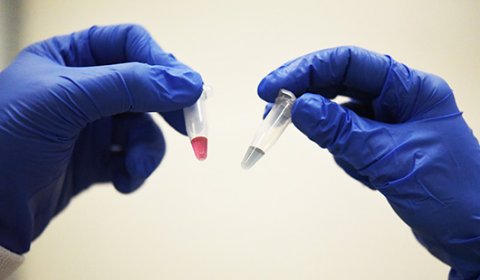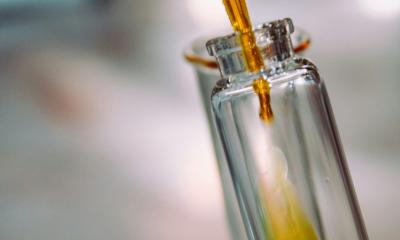News • Common DNA structure
Nano-signature discovery could revolutionise cancer diagnosis
A quick and easy test to detect cancer from blood or biopsy tissue could eventually result in a new approach to patient diagnosis.

The test has been developed by University of Queensland researchers Dr Abu Sina, Dr Laura Carrascosa and Professor Matt Trau, who have discovered a unique DNA nanostructure that appears to be common to all cancers. Cancer is an extremely complicated and variable disease and different types of cancer have different signatures. Dr Sina said it had been difficult to find a simple signature that was distinct from healthy cells and common to all cancers. “This unique nano-scaled DNA signature appeared in every type of breast cancer we examined, and in other forms of cancer including prostate, colorectal and lymphoma,” he said.
“The levels and patterns of tiny molecules called methyl groups that decorate DNA are altered dramatically by cancer – these methyl groups are key for cells to control which genes are turned on and off.”
Dr Carrascosa said we took a holistic approach and developed a tool that could look at these pattern changes at the whole genome level within minutes. “In healthy cells, these methyl groups are spread out across the genome, but the genomes of cancer cells are essentially barren except for intense clusters of methyl groups at very specific locations.”
Professor Trau said the team discovered that intense clusters of methyl groups placed in a solution caused cancer DNA fragments to fold into unique three-dimensional nanostructures that could easily be separated by sticking to solid surfaces such as gold.

“We designed a simple test using gold nanoparticles that instantly change colour to determine if the 3D nanostructures of cancer DNA are present,” Professor Trau said. He said cancer cells released their DNA into blood plasma when they died. “So we were very excited about an easy way of catching these circulating free cancer DNA signatures in blood,” he said. “Discovering that cancerous DNA molecules formed entirely different 3D nanostructures from normal circulating DNA was a breakthrough that has enabled an entirely new approach to detect cancer non-invasively in any tissue type including blood. This led to the creation of inexpensive and portable detection devices that could eventually be used as a diagnostic tool, possibly with a mobile phone.”
The new technology has proved to be up to 90 percent accurate in tests involving 200 human cancer samples and normal DNA. “We certainly don't know yet whether it’s the holy grail for all cancer diagnostics, but it looks really interesting as an incredibly simple universal marker of cancer, and as an accessible and inexpensive technology that doesn’t require complicated lab-based equipment like DNA sequencing,” Professor Trau said.
Source: University of Queensland
23.05.2019











